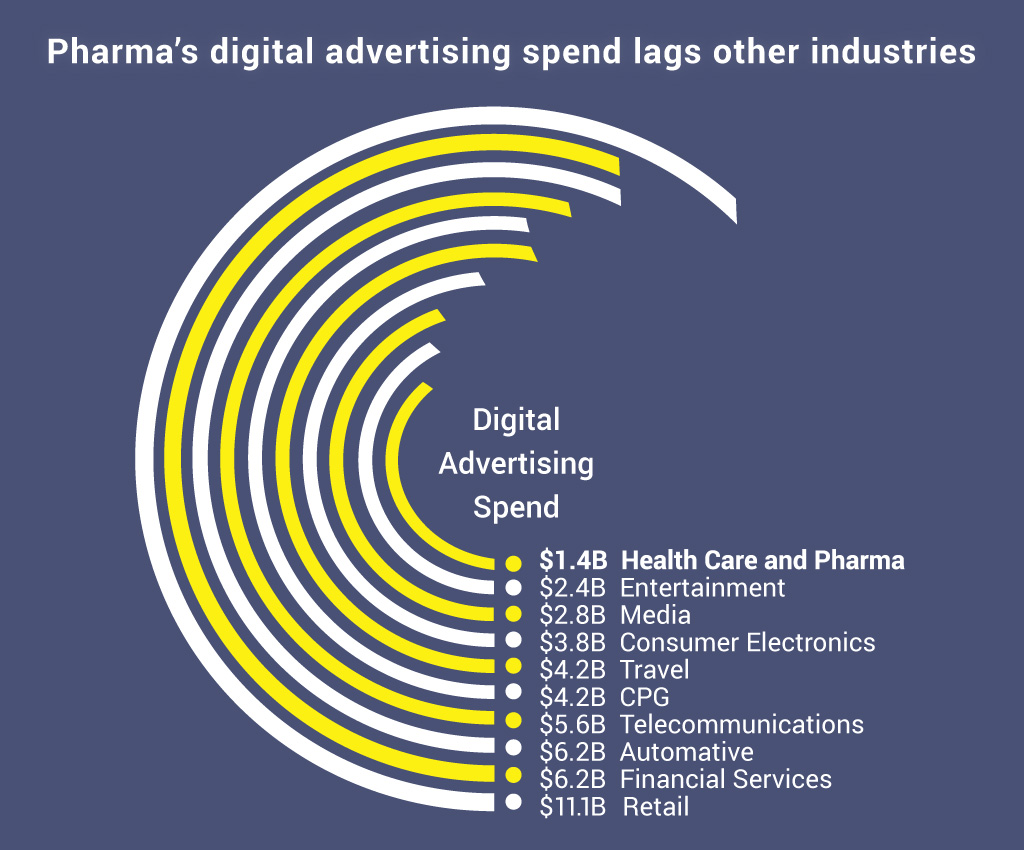
The recent analysis by top consulting group Deloitte and Gerson Lehrman Group (GLG) states that pharma companies have missed the first opportunity given by social media interactions for engagement with doctors due to several factors.
Firstly, pharma companies remained slow in adapting to the digital environment altogether. Globally, pharma companies are not spending enough to use this new emerging but highly successful ecosystem. This transpires into group-thinking resulting in similar range-bound limited outcomes from a traditional marketing approach, pharma companies have been practicing.
According to the Deloitte’s report, pharma companies worldwide are spending only about 8% of their marketing budgets on emerging technology platforms. The ratio of this expenditure to the number of doctors on doctors’ networking platform is extremely uneven. When we compare major industries which are spread across the globe with considerably similar constraints and dynamics, automobile industry spent about US$6.2 billion, whereas pharma and healthcare industry around the globe only spent US$1.4 billion on digital advertising and marketing efforts.

Secondly, the pharma companies who were interested in this new online ecosystem targeted all their efforts in a basket. They developed their own websites and platforms.
Even though doctors demand the full spectrum of proprietary clinical insights, GLG and Deloitte’s survey found that 75% the doctors do not trust the content and information pharma companies directly provide to them. Whereas third party aiding platforms like Docplexus are trusted for their content and information delivery approach.
According to the survey, mobile applications of a pharma company gets an average 100-5000 downloads. Compare that to the third party social media platform and the number soars to 1 million to 5 million downloads on an average globally. In India, Docplexus, with 2,60,000+ doctors using its mobile app and website, holds the top dominating position in the medical community. Docplexus has shown 100% growth in its users in the last 1 year, which is unprecedented for healthcare and pharma sector.
It appears that these numbers reflecting the strength of this ecosystem have been largely ignored by healthcare and pharma companies. What matters now, is whether pharma pays enough attention to this dynamic opportunity.
Social media has spread its arms in all areas of our lives. May it be our personal interactions with our friends, family or be it how we interact with our professional peers. There is no dispute that social media has inherently changed the behaviour of consumers in accessing and sharing the information across all the industries. When healthcare sector is considered, doctors’ networking platforms such as Docplexus has also shown that there is virtually no difference how doctors around the globe interact with each other. With increasing engagement of doctors on community-specific professional platforms, there is a clear indication that doctors are perceiving content on these social media as a valuable proposition for them. Some global surveys have also shown that doctors are increasingly getting interested in interacting with pharma companies for more practice-related interactions.
So the question arises if there are any opportunities for pharma? What pharma companies should embrace to successfully establish them in this new ecosystem?
What pharma companies need to do NOW?
Both Deloitte and GLG reports stated, when they asked physicians about their interests, 65% of physicians indicated interest in engaging with clinical data via social media. Additionally, more than 84% doctors ranked safety/efficacy, clinical guidelines, and long-term outcome data as influential or very influential in drug utilization decisions. Given the importance of this information, pharma should leverage its exclusive insights as a means to contribute in the social space.
Now, there is the opportunity we have been talking about. The Indian pharma companies do not have to wait for any platform to come up. Docplexus already hosts a majority of Indian doctors, who are in a constant search for a quality proprietary content. The Indian pharma companies already have what they need, a quality content, but the pharma companies have not discovered the best way to deliver this content to doctors. All pharma needs to do is to engage and interact with these doctors who need new clinical insights for their practice through a platform like Docplexus. In this way, pharma gets the access to these doctors by addressing their needs of their practice.
This way pharma can bring something of a great value for the doctors as well as can gauge unbiased market response. In addition, this data when collected and used intelligently can help in devising the strategies for effective targeting and engagement. What pharma companies need to do now is to act immediately. Any further delay will just ensure the widening of the relationship gap between their customers and some wise competitor can easily fill that.
Sources:
- Primary Research – Survey Results from GLG (Q40)
- Primary research – Survey results from GLG (Q39)
- Primary research – Survey results from GLG (Q14, Q15a, Q21, Q22a)
- Primary research – Survey results from GLG (Q40/41)
- Deloitte Center for Health Solutions 2014 Survey of US Physicians – Q745
